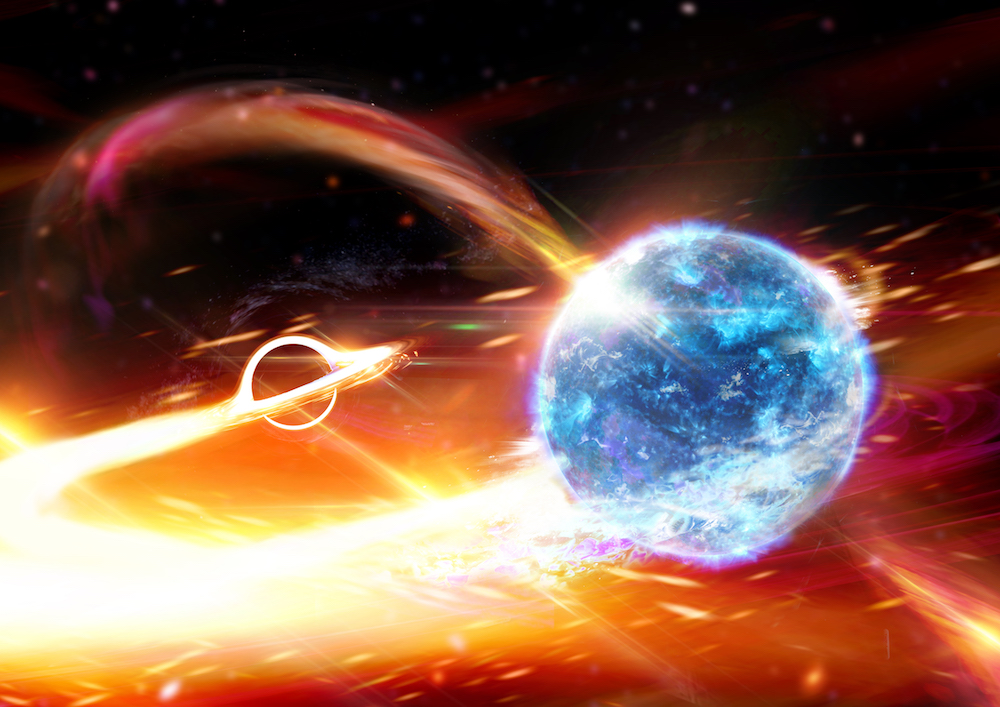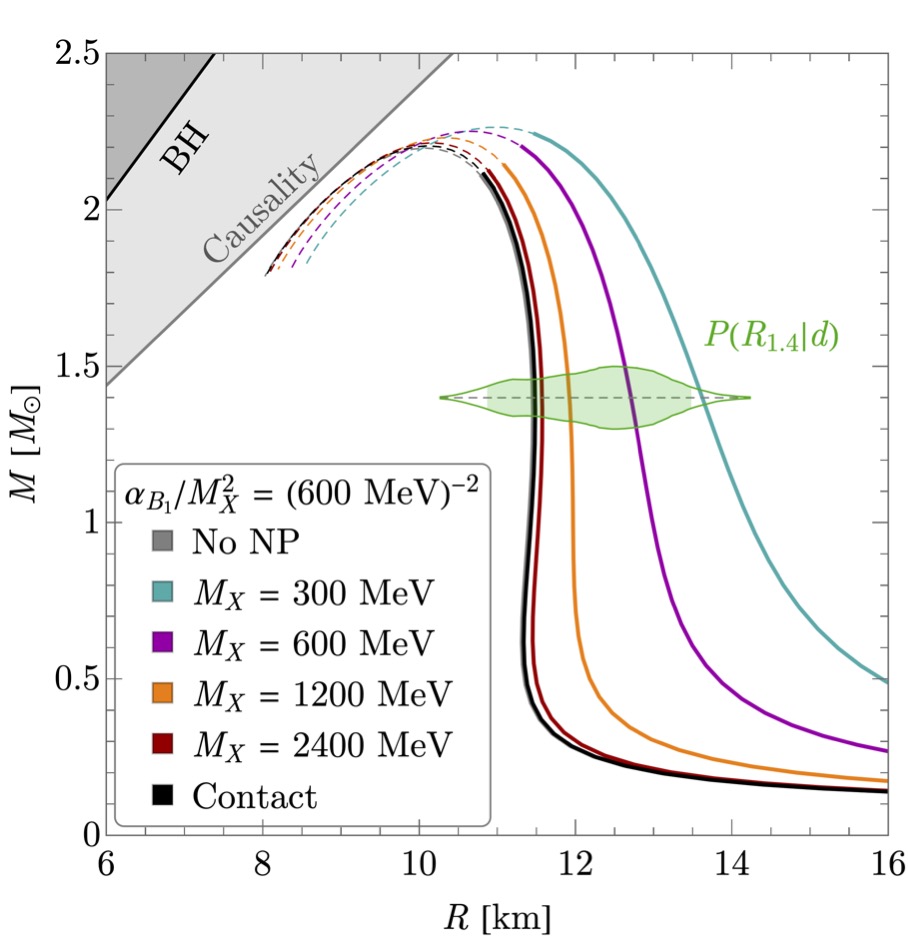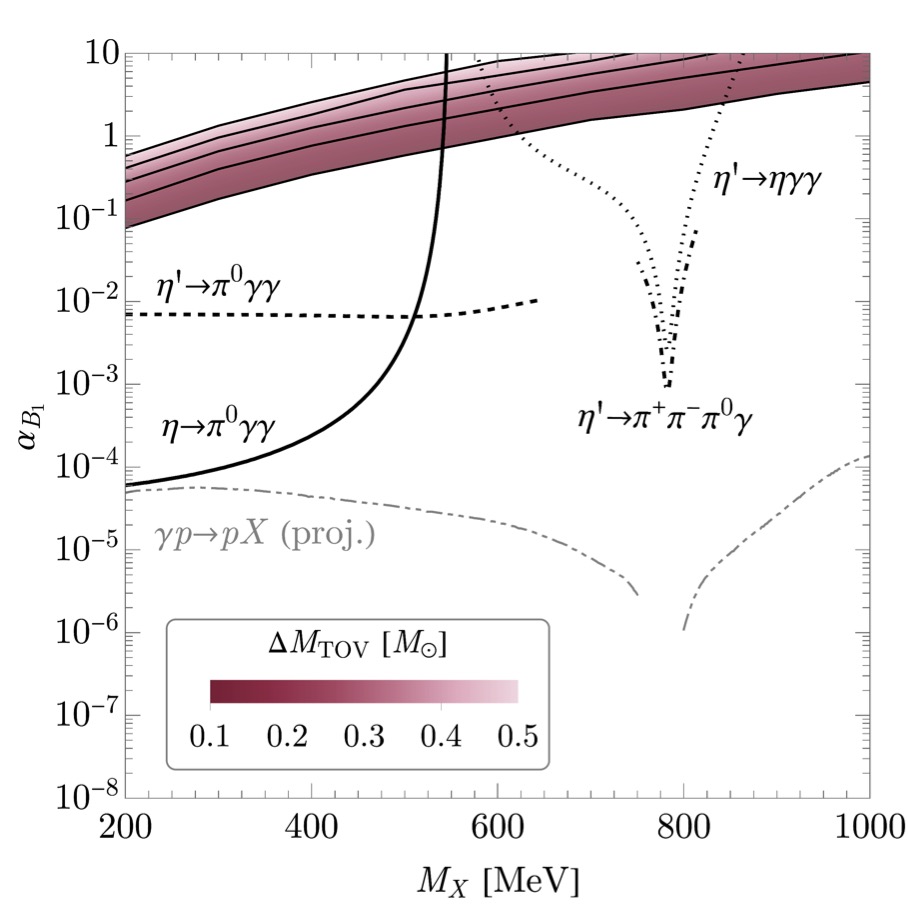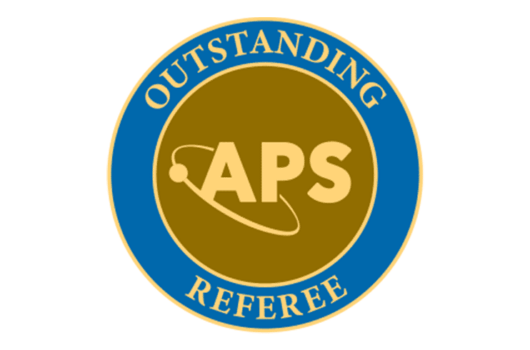The Secret Lives of Quarks: Hints of New Forces in Neutron Stars

At the ends of their lives, heavy stars can no longer support their own weight, which can result in fantastically energetic explosions, i.e., supernovae. When the stardust settles, the heaviest among these leave behind black holes; less massive progenitors, however, wind up as neutron stars, aggregates of nuclear matter that pack the mass of the Sun, e.g., into a region slightly larger than Queens, NY.
The details of neutron star structure – the relationship between its mass and its size, or of how squishy or firm the star is, etc. – are governed by the fundamental forces between its neutrons and protons (and that of their quarks). These forces are difficult to describe from first principles; historically, we have relied on phenomenological descriptions that have been tuned to reproduce observations. Because this approach is reactive instead of predictive, it leaves open the possibility that new physics has been hiding under our noses for decades — we just need to know how to look for it!
In recent work, we have considered how new forces between neutrons and protons – forces not prescribed by the Standard Model of particle physics – can modify the structure of neutron stars. In order to have observable impacts, the new mediator must be relatively strongly coupled (stronger than electromagnetism, but weaker than the strong nuclear force) for masses in the range 300 MeV – 1 GeV (between roughly the pion and neutron masses). The new forces we considered are repulsive, allowing neutron stars to be both physically larger and more massive than they would be without the new interaction.

Recently, the LIGO and Virgo collaborations announced the detection of GW190814, a gravitational wave event in which a heavy black hole merged with an object of indeterminate composition. This latter object is perhaps too heavy to be a neutron star, but it is also lighter than any black hole observed to date. We will likely never know which of these it was, but our scenario suggests that we should see more such objects through future gravitational wave observations.
If this new physics exists, then it ought to be observable in other systems, too. Since this new interaction couples to neutrons and protons, it should also leave observable imprints on some rare decays of light mesons.
We have studied how well these decays can constrain this new physics scenario and found that the answer is not cut-and-dried. As with the forces between neutrons and protons, it can be difficult to predict what the rates of these decays ought to be under the Standard Model, leaving wiggle room in which new physics can be hiding — certainly, too, there are open regions of parameter space for new experiments to probe.

Over the coming decades, the growing gravitational wave dataset and new measurements of rare meson decays at JLab and elsewhere should resolve the question of whether or not quarks are behaving as the Standard Model says they should — we just might manage to show that they really are doing something unexpected!
This introduction was prepared by N3AS fellow Jeffrey Berryman. Credit for header image: Carl Knox, OzGrav.
Read More:



